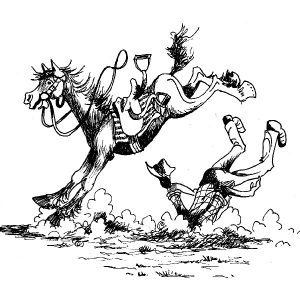RIDDLES have been around for centuries and seem to surface in waves. Some of the riddles which our grandchildren offered us enthusiastically, were the same ones we had enjoyed in kindergarten and primary school.
They are a wonderful way to play around with words and amuse kids; this exercise can easily fill up a couple of otherwise dull hours and shorten a long journey. We’ve had hours of fun compiling this book.
Like storytelling, riddles are able to access the pictures in your mind which help you solve the puzzles they pose. In fact many riddles cannot be solved without using the process of visualisation.
Riddles also teach children to think both logically and laterally – to make new connections and stretch their thinking. They are part of a process called synectics which, from the Greek, means to join together different and irrelevant ideas. Used in this way they can develop both individual and group creativity and problem solving.
Recently, during a visit overseas, we asked some children to see if their teacher would be interested in collecting original riddles from their classes. This turned out to be an exciting exercise and, when Helen turned up to tell some tales at that school, she was delighted to see the excitement and enthusiasm the riddles produced, for teachers and children alike.
Following the storytelling, the children presented their riddles orally and gave her a sheaf of them to bring back to Australia for this book. Many of them had been beautifully illustrated. Some forgot to include the answers to their original riddles and will appear in our next riddle collection.
Having been a teacher, Helen appreciated the enjoyment this exercise gave the teachers and, while having a cup of tea with them, she heard some of the riddles being shared and enjoyed.
We can recommend the exercise to parents, teachers and community groups. It will keep the children both busy and entertained as they enhance their literacy and stretch their thinking skills.
